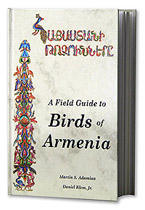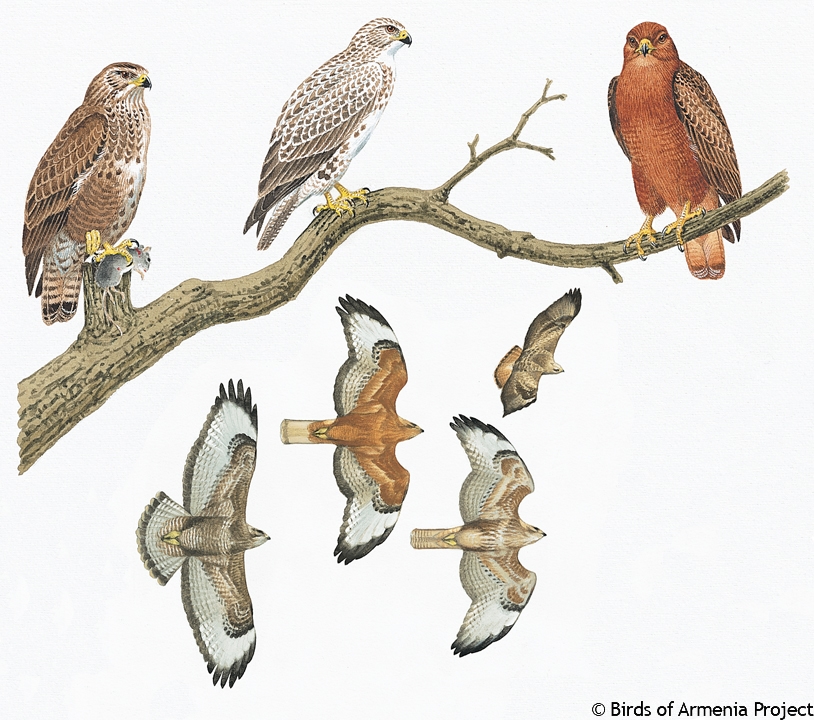- Pictures of All Birds
- Find Bird by Common Name
- Find Bird by Scientific Name
- Find Bird by Armenian Name
- Orders of Birds
- Distribution Maps
- Location of Armenia
- Species of Special Concern

Purchase the Field Guide
© Copyright Birds
of Armenia Project

| Armenian Name: | Մեծ ճուռակ |
|---|

See Plate 6 for Common Buzzard and other similar species See Plate 13 for Common Buzzard and other similar species in flight
| Flight Characteristics: | B. b. menetriesi; broad rounded wings, dark crescent-shaped carpal mark on underwing, and dark terminal tail band. Color highly variable from almost completely blackish to pale brown above and whitish below, usually with narrow pale breast band. Most individuals, however, are dark red-brown overall. From below shows whitish primaries with blackish tips. Juvenile has more streaked underparts, and faint dark border on rear edge of wing and on tail tip. Soars with wings pushed slightly forward and raised, and with tail fanned. Glides on flat or slightly arched wings, bent back when moving at high speed. B. b. vulpinus; a common migrant (not shown), is usually uniform dull red below with a darker line bordering the base of the flight feathers. Tail band often faint. Dark brown and light phases of this subspecies also occur. Typically appears small, with shorter broader wings than menetriesi. Differs from Rough-legged and Long-legged Buzzards by combination of shorter broader wings, color pattern of body, wings and tail, and barred body below. |
|---|---|
| Resident Status: | Year-round resident |
| Abundance: | Common |
| Length: | 51-57 cm, Wing Span:113-128 cm |
| Distribution Map: | Map 44. |
| Description: | Broad-winged raptor; exceptionally variable in color of underparts from brown to red to white. Light birds show more prominent carpal patch. Barred below with whitish breast band. Tail has numerous narrow bars at base. Subspecies often difficult to distinguish in the field, but B. b. vulpinus usually shows reddish-brown tail and underparts. |
| Adult: | Secondaries, and usually tail, show broad terminal band. |
| Juvenile: | Lacks prominent terminal band on tail and secondaries. |
| Similar Species: | Differs from Long-legged Buzzard by proportionately shorter wings and tail. |
| Behavior: | Often seen in flocks on migration. Hovers awkwardly. |
| Habitat: | Steppe, marsh, river valleys, forest, refuse piles. |
| Food: | Rodents, other small animals, insects, carrion. |
| Nest: | Platform of branches in tree or rarely, cliff ledge in forested area. |
| Eggs: | 55 mm, 2-4, white, red-brown spots. |